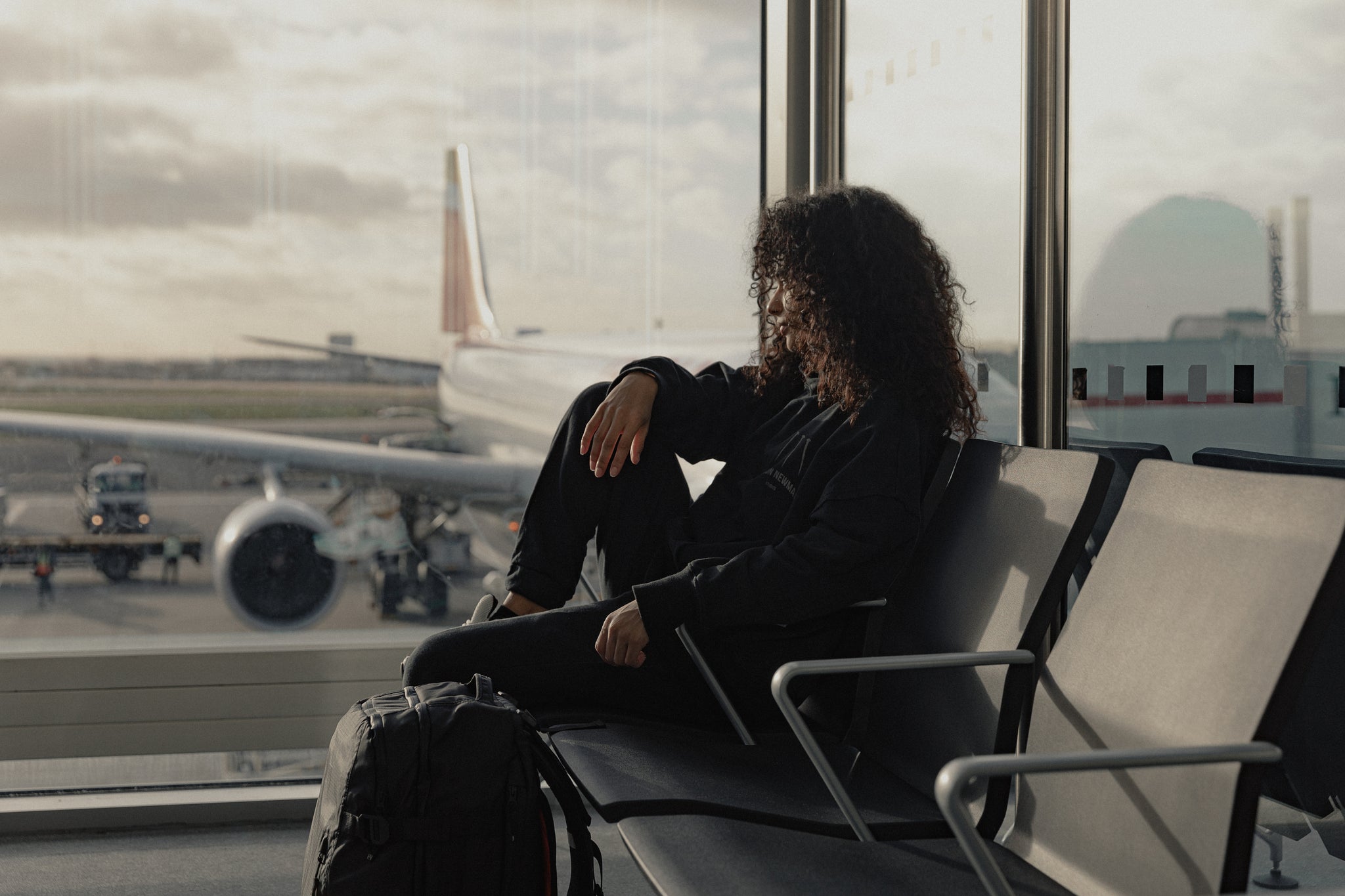

Navigating airline baggage policies can be confusing, as rules vary between airlines and from country to country. Understanding different cabin and hold luggage allowances can feel like solving a puzzle, often leaving you worried about unexpected fees upon arrival and complications during your journey - but we are here here to help; clarifying terminology and sharing the dimensions of our bags and how they align with specific requirements for top airlines. Additionally, we'll share some practical tips to ensure you choose the right bags for your trip and pack accordingly. We’ve also included some frequently asked questions around what you can bring on board, versus what needs to be checked in.
Whether you're a frequent flyer or planning your first trip, our guide aims to make your travel experience smoother and more enjoyable. By the end, you'll feel confident and well-prepared and ready to embark on your journey without any baggage-related stress.

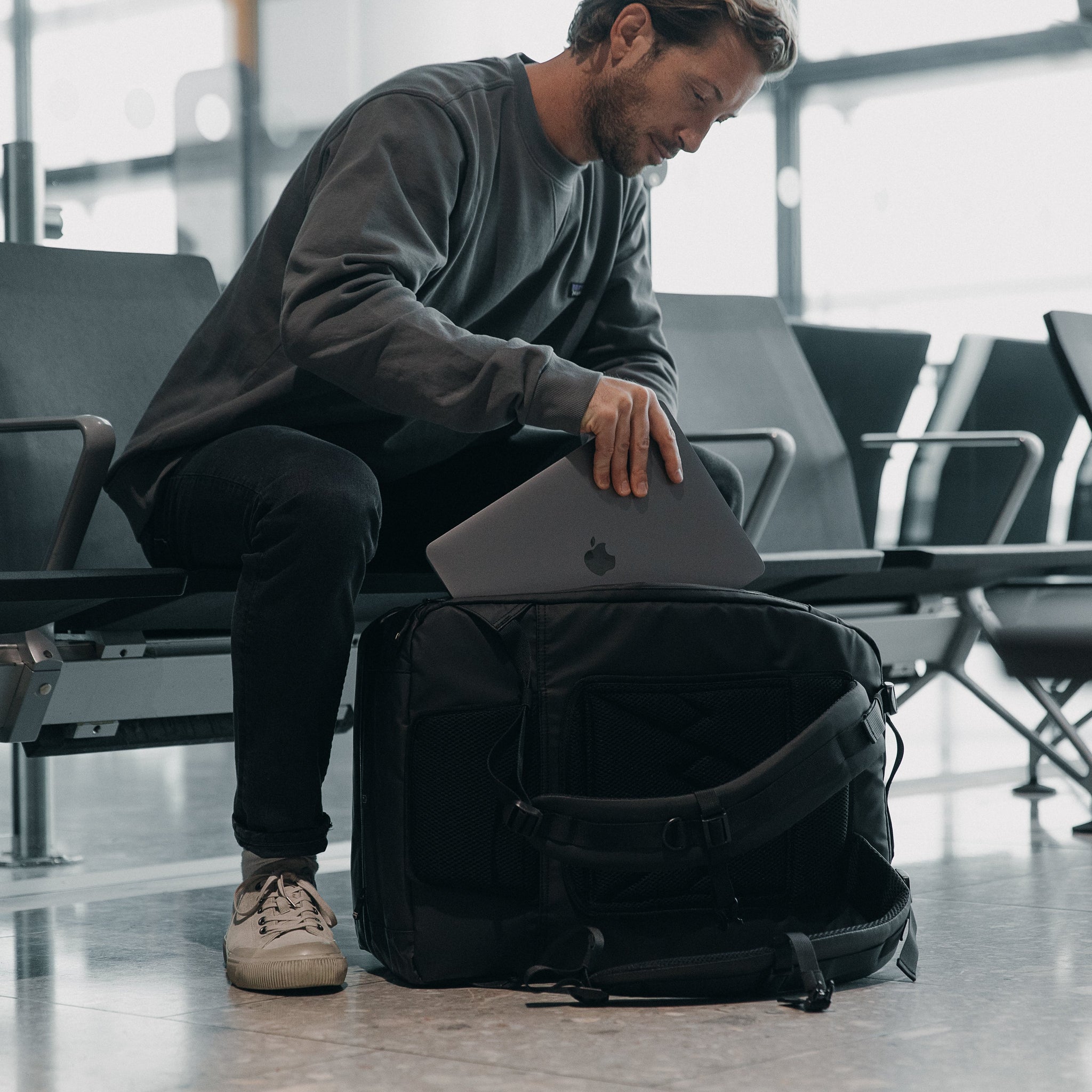

When it comes to cabin bags and luggage, there are several terms used interchangeably, which can make it difficult to know exactly what's allowed and what's not. From 'cabin bag' to 'carry-on luggage' and 'hold luggage' to 'checked baggage,' the terminology can vary depending on the airline and the region. But don't worry, we're here to help you navigate through it all and ensure you're clear on what you can bring onboard and what needs to be checked in.
Some airlines additionally have different rules; bags that go under the seat in front of you or bags that go in the overhead lockers. These bags often have different limitations in size and weight.
Carry-on bag, Hand luggage, Carry-on luggage, Carry-on suitcase, Cabin luggage, Hand baggage, Carry-on baggage, Travel bag, Aeroplane bag, Overhead bag, Flight bag, Personal item, In-flight bag, On-board bag, Wheeled carry-on, Small suitcase, Boarding bag, Transit bag, Cabin case, In-cabin bag.
Checked luggage, Checked baggage, Checked bags, Checked suitcases, Hold baggage, Hold bags, Checked-in luggage, Checked-in baggage, Cargo luggage, Checked-in bags, Hold suitcases, Stowed luggage, Stowed baggage, Cargo hold luggage, Cargo hold baggage, Registered luggage, Registered baggage, Main luggage, Main baggage, Airline hold luggage, Airline hold baggage, Luggage in the hold, Baggage in the hold
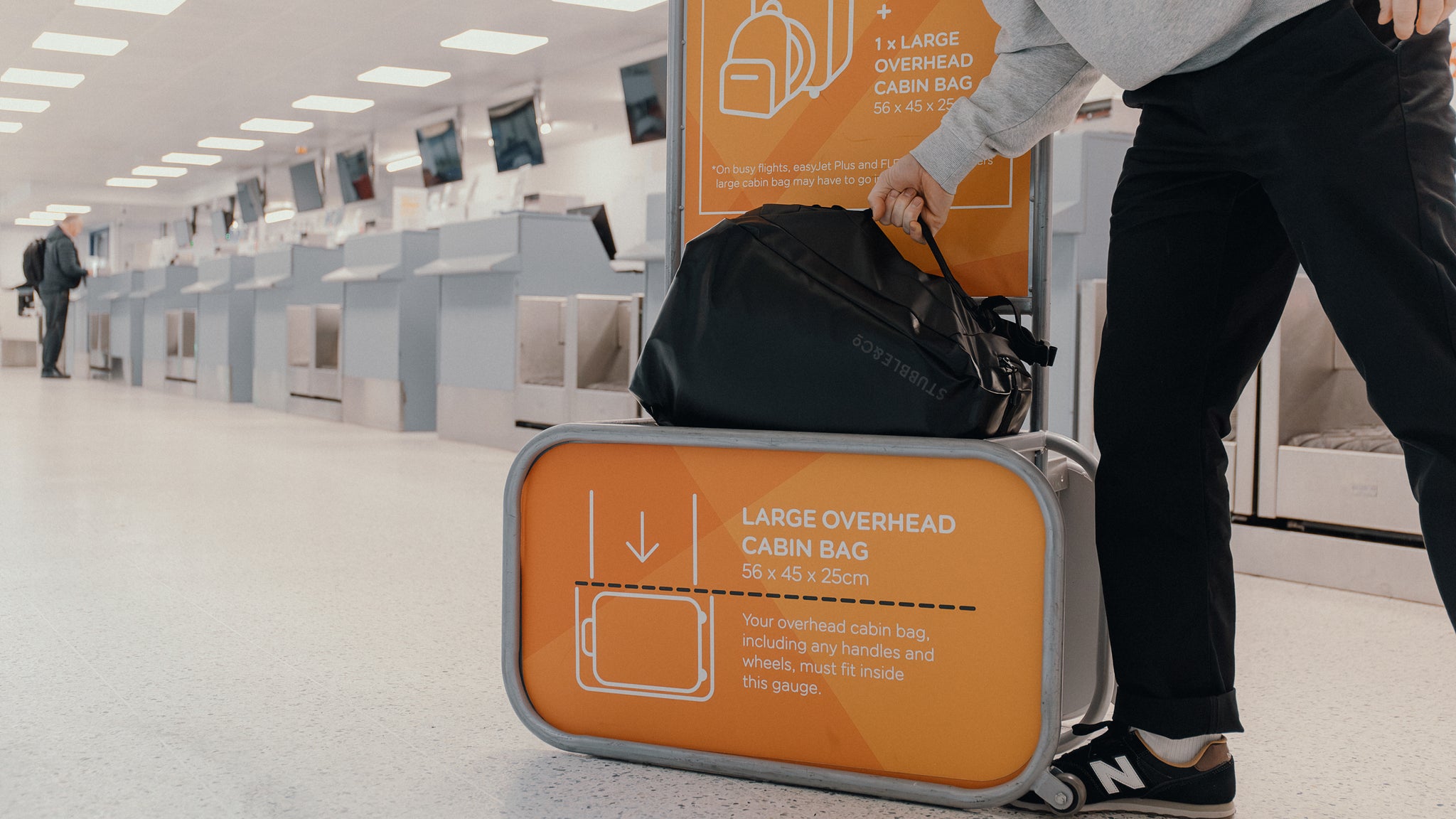
Packing efficiently can make a significant difference in your travel experience, saving you time, space, and sometimes even money when you don't have to buy an additional bag. Whether you're heading out on a short business trip or embarking on a long holiday, knowing how to organise your belongings effectively is key.
Here are some practical tips to help you maximise your luggage space, whilst adhering to airline baggage guidelines.
To avoid unnecessary charges, whether it is the size of your luggage or the overall weight, ensure you are following each airlines specific guidelines.
Packing cubes are a great way to organise your clothes and maximise your space within your luggage. The best way to pack them is to pack by categories, e.g., one for tops, one for trousers etc.
Bags that fold down are invaluable for saving space but are very useful when on holiday and travelling. This means you can carry an additional bag without the bulk. Check out our range of ultra-light bags, the perfect travel essentials.
Rolling your clothes and smaller items can save you space and also prevents your clothes from creasing - eliminating the need to iron Also try putting any smaller items into shoes such as socks.
We all know that security checks at the airport can be tedious when you have to open up your bag and unpack into the trays before packing them again. Therefore, to help, keep your electrical devices and liquids at the top of your bag or in the accessible pockets. Also, try and pre-pack your liquids into a clear plastic bag before your trip and ensure that each individual item is under the 100ml limit. It is important that the container itself is 100ml or less. Note that, for example, a 200ml bottle that is half full will not be allowed through the security check. This will make your security check experience easier and more convenient.
Digital scales are portable and therefore you can weigh your bag at home before leaving for the airport or take it away on your travels with you. This will ensure you remain within the airline policies weight allowance on your outbound and return trip, avoiding any additional charges at the airport check-in desk or gate.
Wearing bulky items saves space in your luggage. If you can, wear your trainers, or bigger outerwear items such as coats and hoodies to help with this.
Make sure you have all your essentials for travelling in reach. You will definitely want your phone and passport handy but also a book and headphones for entertainment whilst you travel, as well as any important documents you may need. Perfect bags for quick access to these items are The Crossbody and The Shoulder Bag.
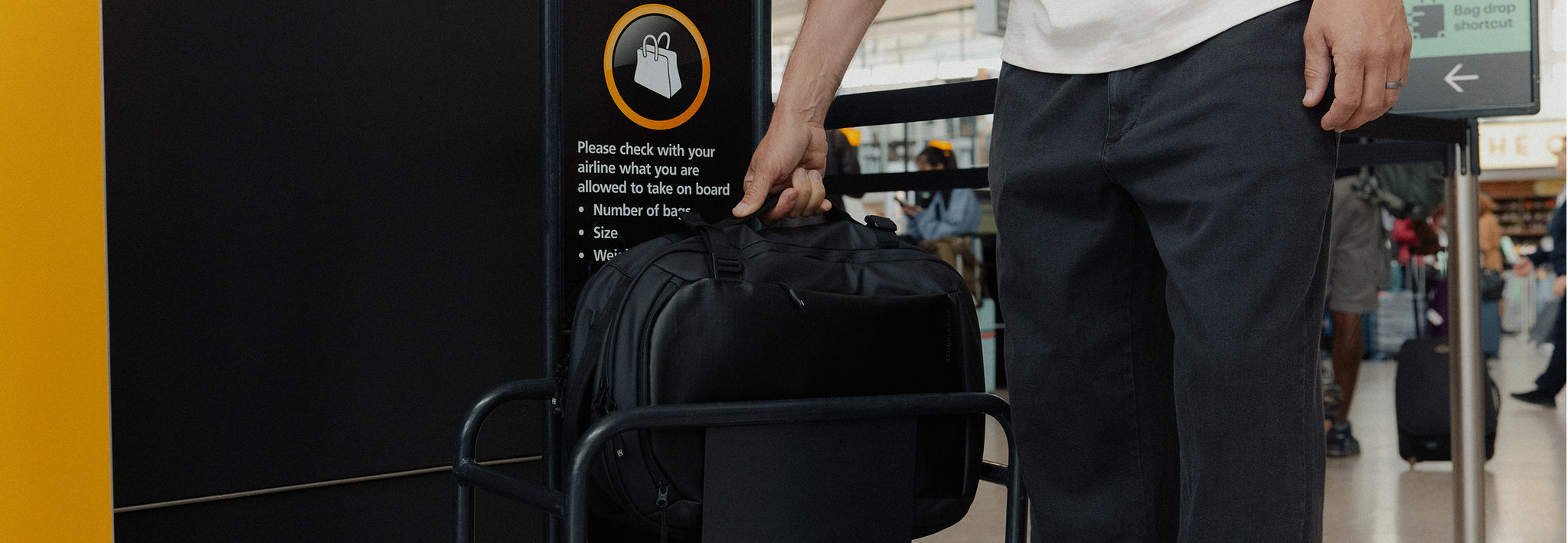
Here is a guide to the size and weight allowances for popular airlines so you can ensure that your luggage will follow their rules. Note that this information may have changed but was accurate as of June 2024.
Hand Luggage:
Size: 40cm x 30cm x 15cm
Weight:23kg
Cabin Bag:
Size: 56cm x 45cm x 25cm
Weight: 23kg
Checked-in Luggage:
Size: 90cm x 75cm x 43cm
Weight: 23kg
Additional Information:
- Bags over 32kg will not be accepted.
- Bag weight cannot be pooled together and therefore the bags must be within the weight limit.
- Overweight bags will be charged per journey: £65/$100/$100(CAD)/€75
Hand Luggage:
Size: 45cm x 36cm x 20cm
Weight: 15kg - must fit under the seat in front of you
Cabin Bag:
Size: 56cm x 45cm x 25cm
Weight: 15kg - must fit in the overhead locker
Checked-in Luggage:
Size: Under 275cm = length + width + height
Weight: 23kg
Additional Information:
- For bags weighing above 23kg, you can pay £15 for each additional 3kg with a maximum weight of 32kg.
- If you bag is heavier than your pre-booked weight, then there will be a charge of £12per kg, per item, per flight.
- EasyJet holidays include a 23kg bag
- EasyJet flights do not include a bag- cabin bags can cost £35 and a checked in bag can be £50.
Cabin Bag:
Size: 56cm x 45cm x 25cm
Weight: 10kg
Checked-in Luggage:
Size: N/A
Weight: 22kg
Additional Information:
- In addition to a cabin bag, passenger are also allowed to carry a small person item such as a handbag.
- For every kilo you bag is overweight, you will be charged £12 at the airport.
- A single bag cannot be over 32kg.
Hand Luggage:
Size: 40cm x 20cm x 25cm
Weight:15kg
Cabin Bag:
Size: 55cm x 40cm x 20cm
Weight: 10kg
Checked-in Luggage:
Size: 80cm x 120cm x 120cm
Weight: 20kg
Additional Information
- Hand luggage must be able to fit under the seat in front of you.
- A single bag can be no heavier than 32kg.
"Bag pooling" is allowed so 2 bags can have a combined weight of booked weight.
- If a bag is overweight, you will be charged £11 per kilo, per item, per journey.
Cabin Bag:
Size: 55cm x 40cm x 20cm
Weight: 10kg
Checked-in Luggage:
Size: N/A
Weight: 15kg, 20kg, 25kg
Additional Information:
- Cabin bags are free.
- The price of checked-in luggage varies dependant on the weight. 15kg=£60 / 20kg=£68 / 25kg=£78
Cabin Bag:
Size: 23cm x 36cm x 56cm
Weight: 10kg
Suitable Stubble & Co: Roll Top 20L, Roll Top 15L, Everyday, Kit Bag 30L, Weekender.
Checked-in Luggage:
Size: 90cm x 75cm x 43cm
Weight: 23kg
Suitable Stubble & Co: Adventure Bag, Kit Bag 65L.
Additional Information:
- All tickets (apart from economy light) come with a checked-in bag.
- Additional bags can be brought, starting from £50.
Hand Luggage:
Size: 40cm x 30cm x 20cm
Weight: 10kg
Cabin Bag:
Size: 55cm x 40cm x 23cm
Weight: 10kg
Checked-in Luggage:
Size: 149cm x 119cm x 171cm
Weight: 10kg, 20kg, 26kg, 32kg
Additional Information:
- Every passenger gets a free hand luggage.
- If you book a priority ticket, you can take a cabin bag on board for free.
- Checked-in luggage is not complimentary and must be purchased.
Hand Luggage:
Size: 30cm x 40cm x 15cm
Weight: 12kg (combined with cabin bag)
Cabin Bag:
Size: 55cm x 35cm x 25cm
Weight: 12kg (combined with hand lugagge)
Checked-in Luggage:
Size: max 158cm (height + depth + width)
Weight: 23kg (economy + premium economy), 32kg (business).
Additional Information:
- In economy, you can take 1 hand baggage and 1 cabin baggage.
- In Premium Economy, you can take 1 hand baggage and 1 cabin baggage.
- There will be additional costs if you bag exceeds the dimensions but this is dependant on where you are flying to/from.
Hand Luggage:
Size: 45cm x 35cm x 20cm
Weight: N/A- It must fit under the seat in front.
Cabin Bag:
Size: 56cm x 36cm x 23cm
Weight: N/A- must be able to put it into the overhead locker unaided.
Checked-in Luggage:
Size: 158cm (height + width + depth)
Weight: 23kg and 32kg for Business and First Class passenger
Additional Information:
- Bags are all non-refundable once added onto your ticket.
- Bag fees differ based on your destination
Hand Luggage:
Size: 22cm x 25cm x 43cm
Weight: N/A- It must fit under the seat in front.
Cabin Bag:
Size: 23cm x 35cm x 56cm
Weight: N/A- must be able to put it into the overhead locker unaided.
Checked-in Luggage:
Size: 76cm x 52cm x 30cm
Weight: 23kg for Economy and Premium Economy passengers; 32kg for Business and First Class Passengers.
Additional Information:
- Complimentary hand luggage.
- For a cabin bag which is not pre-booked, you will be cahrged $25 at the gate.
- On their website there is a "baggage calculator" where you can enter your flight details and find out the baggage allowances and costs fir your individual trip.
Hand Luggage:
Size: 33cm x 16cm x 43cm
Weight: N/A- It must fit under the seat in front.
Cabin Bag:
Size: 55cm x 23cm x 40cm
Weight: N/A- must be able to put it into the overhead locker unaided.
Checked-in Luggage:
Size: N/A
Weight: N/A
Additional Information:
- All baggage allowance is based on the destination and route being taken. All information is on their website.
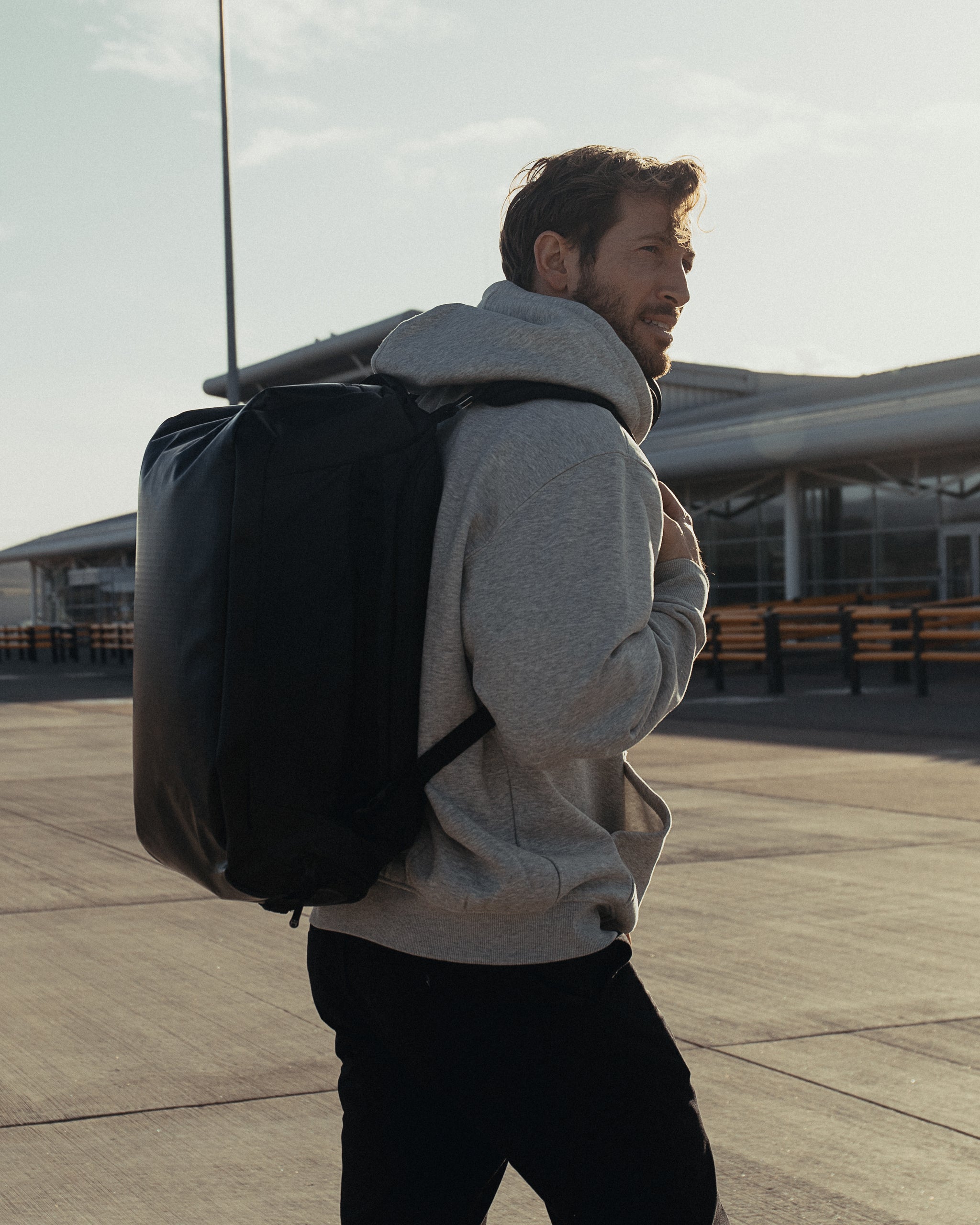

Keep all the essentials in reach so you can grab-and-go for a hassle free trip.
You may face an additional fee or be asked to place it in the hold underneath the plane. This means you will not have access to your belongings. Or, you may have to rearrange between your hold luggage and cabin luggage.
This does depend on your airline, often you have a cabin bag in the overhead locker and a personal hand luggage under the seat in front, check out this article for information about your airline or visit their website.
No. Each airline differs and it is important to check the luggage policy for the airline you are flying with.
No airline accepts a single piece of luggage above 32kg due to health and safety of luggage handlers at airports.
Measure the dimensions of your bag once it is packed and full and compare then to the luggage policy of the airline you are flying with. Make sure to include the wheels within these measurements as they will be included in the overall dimensions.
Of course! It is cheaper to pre-book luggage when you book your flights than paying at the airport check in.
Some airlines have a point or loyalty scheme.
E.g., British Airways have Avios points which are collected by booking with them multiple times. These can then be used to pay for flights or upgrading your class.